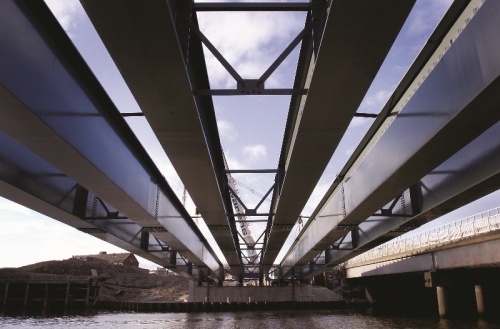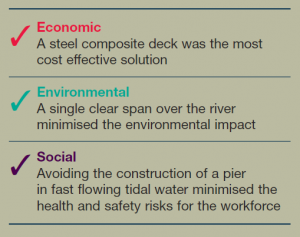Difference between revisions of "River Kelvin Bridge"
| Line 13: | Line 13: | ||
|} | |} | ||
{{#image_template:image=File:River_Kelvin_Bridge_-_Table.png|caption= |align=left|wrap=true|width=300}} | {{#image_template:image=File:River_Kelvin_Bridge_-_Table.png|caption= |align=left|wrap=true|width=300}} | ||
| + | |||
| + | [[Category:Case studies - Bridges]] | ||
Revision as of 11:59, 12 March 2019
The original plan for this crossing was a two-span bridge similar to an existing adjacent structure. However, the high strength to weight ratio of steel meant that a single span was feasible. Avoiding the construction of a pier in the fast flowing tidal river minimised the cost, environmental impact and the health and safety risks for the workforce. The lightweight nature of steel minimised the loads on the piled foundations, and also facilitated erection using readily available cranage. This 61.5m single span multi-girder steel composite bridge is a key part of the regeneration of Glasgow's waterfront, and is believed to be the longest of its type ever built in the UK.
| Structural Engineer | Atkins |
| Steelwork Contractor | Mabey Bridge Ltd. |
| Main Contractor | Farrans |
| Client | Glasgow Harbour |





